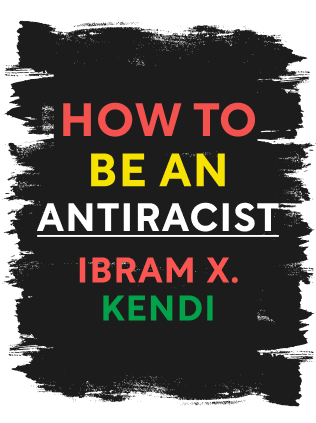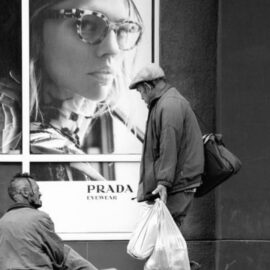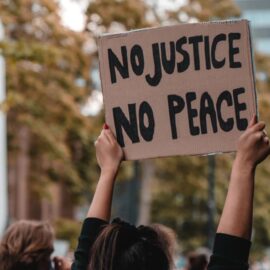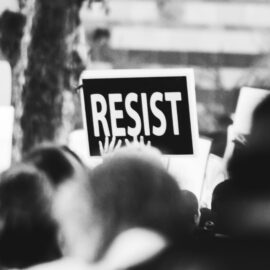

This article is an excerpt from the Shortform book guide to "How to Be an Antiracist" by tIbram X. Kendi. Shortform has the world's best summaries and analyses of books you should be reading.
Like this article? Sign up for a free trial here .
What is Black-on-Black racism? Is it possible to be racist against your own race?
Black-on-Black racism is the idea that, within a race, there is a hierarchy formed by members of that race. It is racism directed at members of your own race.
Keep reading for more about Black-on-Black racism and what it means.
Black-on-Black Racism: Overview
Many people think Black people can’t be racist toward each other. Black people themselves often don’t call other Black people “racist;” they have other names, such as “sellouts” or “Oreos,” but “racist” is most accurate. Black-on-Black racism is seen in two ways:
- They create subgroups within a race and assign a hierarchy.
- For example, Chris Rock, in his show Bring the Pain, talked about how he loved Black people but not “niggers,” which he and many others define as a lower class of Black people.
- They work against members of their own race. Some people are more concerned with advancing their own personal interests than those of their races.
- Example #1: In the 1980s, Samuel Pierce, the Black secretary of the Department of Housing and Urban Development, gave funds that had been intended for low-income housing to Republican donors and corporations.
- Example #2: Ken Blackwell, Ohio’s Black Secretary of State, suppressed Black votes, which affected the results of the 2004 presidential election.
History and Invention of Black-on-Black Racism
The first instance of written Black-on-Black racism comes from a book written in 1526. The author, a Morrocan Moor, was kidnapped in Africa and enslaved. He was given to the pope, who converted him and freed him. The book included lines about Black people behaving like animals.
In 1657, Richard Ligon, an Englishman, wrote a story he may have made up about slaves in Barbados. A group of slaves tell their master about a planned revolt and when their master tries to reward them, they refuse the reward, because they consider divulging the revolt to be their duty—these Black slaves believed Black people should be enslaved.
In 1818, when Denmark Vesey organized a revolt near Charleston, South Carolina, he had to contend with the fact that some enslaved people were loyal to their masters. He cautioned his army to be careful about who they recruited. Someone wasn’t—when a man named Peter Prioleau found out about the planned revolt, he told his master. Vesey’s army was destroyed and Vesey hung. Prioleau was emancipated and given a lifetime pension, which he used to acquire his own slaves. Prioleau cared more about his own interests than those of his race.
Black People in Positions of Power
Black people have increasingly entered positions of power, starting in the 1960s, which saw more Black police, judges, and politicians. Many people thought that more Black people in power would mean less anti-Black racism from those in power, but often, this wasn’t the case: Black police, politicians, and the Black middle class still practiced Black-on-Black racism.
For example, in the 1960s, violent crime was on the rise in poor neighborhoods, and Black residents approached their leaders with their fears about Black criminals and Black drug addicts, as opposed to criminals and drug addicts in general. Nobody seemed to see the whole picture, which was that drug problems were a public-health crisis, not a specifically “Black problem,” and that violent crime is far more strongly related to poverty than race.
People thought hiring more Black cops would combat police brutality against Black people. However, some of the Black officers treated Black people as badly or worse than White officers. According to a study in 1966, Black officers were less likely to be racist than White officers, but some of them called Black people “savages” or said it was their own fault they weren’t educated. Some police killings, such as that of Shantel Davis, were by Black officers.
A 2017 survey found that White officers are far more likely to be racist than Black ones—only 6% of White officers thought the US has more work to do when it comes to racial inequity, compared to 69% of Black officers. Regarding police killings, however, Black officers are only twice as likely as White officers to attribute the death of Black people by police to “a broader problem,” even though in reality, all racial inequity is caused by policy.
How Much Does Racism Affect Black People?
In 2003, only 40% of Black people thought that the fact that Black people had worse housing, income, and jobs was due to racism. In 2013, it was only 37%. Everyone else found other reasons to explain racial inequity, which was likely a result of the internalization of racist ideas.
By 2017, after very public police killings, the Black Lives Matter movement, and the election of Donald Trump, the percentage of Black people attributing their inequity to racism was 59%. But around 33% of Black people still attributed the inequity to the personal fault of Black people.
Ibram’s Experiences With Racism Within His Race
After Ibram wrote his anti-White column in the FAMU student newspaper, the Black editor of the Tallahassee Democrat, whom Ibram was supposed to be doing an internship with, called him into his office. During the meeting, the editor mentioned that he had a nice car, and that he hated it when he was pulled over and treated like one of “them niggers.” This was a clear example of Black-on-Black racism.
Ibram kept quiet even though he was very offended. He was furious that the editor would look down on people in his own race and see them as the problem, not the cops. However, Ibram had criticized Black people too. Before Gore had conceded and Ibram had transitioned to hating White people, Ibram had blamed Gore’s loss of the 2000 election on the fact that not enough Black people had voted, not on voter suppression policies, which was the actual reason.
African American Studies
Speaking with the editor helped Ibram discover that he could be racist even though he was Black, and he began to deal with his dueling consciousness. He took some courses in African American studies and realized that history was a struggle between antiracists and racists, not between different kinds of racists. He had been planning to go into sports journalism but found himself disinterested and pursued graduate studies in African American studies instead, at Temple University.

———End of Preview———
Like what you just read? Read the rest of the world's best book summary and analysis of Ibram X. Kendi's "How to Be an Antiracist" at Shortform .
Here's what you'll find in our full How to Be an Antiracist summary :
- What racism is and how it evolved
- How you might have subtle racist thoughts and not even be aware of them
- Why being "not racist" isn't good enough






